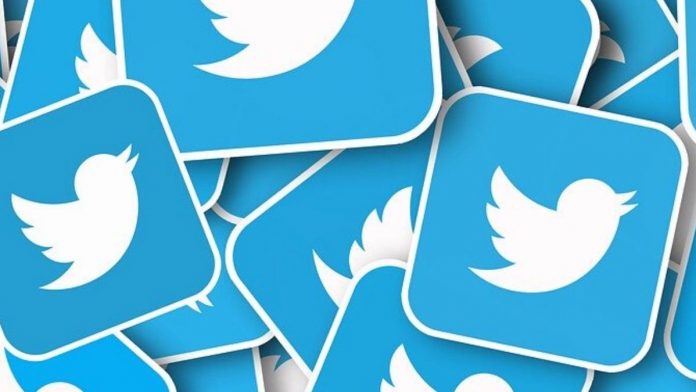This article is written by Sohini Goswami, pursuing Diploma in Cyber Law, FinTech Regulations, and Technology Contracts from LawSikho.
Table of Contents
Introduction
“While the future is unknowable, the winds always blow in the direction of human progress”-Barack Obama. We were born as cavemen and today we have robots to serve us food and drive our cars. This shows how far we have come and how rapidly we have progressed. This process of evolution would be incomplete without the contribution of social media and its impact. Many times, it has been joked that premiere authorities are not as active on the field as they are on their social media sites. All of this is the result of people coming to realize how social media has positively impacted our lives and brought about change not only in how we perceive things but also in how we live our lives. Social media has given us a space to voice our opinions, to stand up for the injustices we see in our day to day lives.
One such social media site is Twitter, since its inaugural, Twitter has always been treated as a ground by many for spiking controversy. Whether it be about spreading religious animosity among communities or carrying out political propaganda of respective political parties or causing a threat to a woman’s dignity, people have used Twitter for all of these above purposes and more as per their convenience.
The incident
Recently, in the past month, an incident took place in Ghaziabad, wherein a 72-year-old man, named Abdul Samad Saifi, was allegedly beaten by 4-5 men and then they chopped off his beard and forced him to chant ‘Jai Siya Ram’. An FIR was then filed following the incident, wherein the victim said that on June 5, the victim was taken to a secret place by the accused and beaten for about 4-5 hours and then forced to chant ‘Jai Siya Ram’. The incident garnered added attention when it was circulated over social media and shared by the likes of journalists such as Rana Ayyub, Mohammad Zubair, and writer Saba Naqvi as well as Congress leaders, Salman Nizami, Maksoor Usmani and Dr Shama Mohammed.
The FIR that was filed at Loni, Ghaziabad, named these above-mentioned famous personalities along with Twitter Inc., Twitter Communications India and the Wire, and the 4-5 men who tortured Saifi. The basis of this as stated by a Senior Officer has been said to be the circulation of the news without checking the complete facts of the case which is considered an offence under the new IT rules governing publishing of online news. They have all been booked under sections 153 (provocation for rioting), 153A (promoting enmity between different groups), 295A (acts intended to outrage religious feelings), 505 (mischief), 120B (criminal conspiracy) and 34 (common intention) of the Indian Penal Code.
Moreover, the police officials expressed disappointment through different print media that, even after issuing a notice to the people mentioned above, most of them did not adhere to the instructions given by the police and did not delete the concerned tweets.
It was further pointed out by both the police as well as the accused that the incident was forcefully being painted in a religious colour. On further investigation, the police found out that the prima facie incident did not have anything to do with religion and that both Hindu and Muslim men were involved in torturing Saifi. Apart from that, the police found out that the whole incident took place as Saifi gave some amulets to these men promising them, it would bring them good fortune, which unfortunately did not happen.
Saifi did not mention the coercion to the chant of ‘Jay Siya Ram’ in the beginning. Only when he realised that the incident had gained momentum, he released a video stating the same. Among all the accused named, Salman Nizami, commented on the incident saying that all the accused people did was tweet about the news that several media houses had already published. It was just to point out that the UP Government was Islamophobic and therefore the only people named in the FIR belonged to the Muslim Community.
The new IT Rules, 2021
A rift between the Central Government and Twitter has been going on for quite some time now, approximately since the new IT Rules were drafted for the governing of intermediaries. At first, it was presumed by the intermediaries such as Whatsapp, Facebook and Twitter that there would be an avenue for them to put forward their concerns during the drafting of the IT Rules. Sadly, that did not happen and a time of three months was given to these intermediaries to make changes to comply with the new IT Rules.
On 26th May, the new IT Rules came into force. Under the Information Technology (Guidelines For Intermediaries and Digital Media Ethics Code) Rules, 2021, few important definitions are:
Section 2 (k)- ‘Digital Media’ means digitized content that can be transmitted over the internet or computer networks and for these rules includes content received, stored or transmitted by:
- An intermediary; or
- A publisher of news and current affairs content or online curated content.
Section 2 (m)- ‘Intermediary’ shall have the same meaning as assigned to it in clause (w) of sub-section (1) of Section 2 of the Act;
Explanation: For these rules, an intermediary includes websites, apps and portals of social media networks, media sharing websites, blogs, online discussion forums and other such functionally similar intermediaries.
Section 2 (u)- ‘publisher of news and current affairs content’, means, an online paper, news portal, news aggregator, news agency and such other publishers of news and current affairs content by whatever name called, but does not include newspapers, replica e-paper of the newspaper and any user generated content which is not transmitted in the course of systematic business activity;
Section 2 (z)- ‘social media intermediary’ means an intermediary referred to in clause (m) which primarily or solely enables online interaction between two or more users and allows them to create, upload, share, disseminate, modify or access information using its services but shall not include an intermediary which primarily;
- Enables commercial or business oriented transactions; or
- Provides access to internet or computer networks; or
- Is in the nature of a search engine, online encyclopaedia, online directory or suggestion tool, e-mail service or online storage service.
Furthermore, the new IT Rules, 2021 goes on to list down changes that are to be made on part of the Intermediaries while performing due diligence in Part II of the Act. The law states that an intermediary has to publish its privacy policy, rules and regulations and user agreement on either its website or via forms of its computer resource by any person. In the event, any information that is defamatory, obscene or harms the integrity of an individual or the nation, or infringes any intellectual property, or impersonates another person and other instances where the information shared by a user does not belong to him/her or belongs to someone else who has the exclusive right to that information- the intermediary is bound to inform the user of the computer resource not to host, display, upload, modify, publish transmit, store or update that information.
Additionally, these intermediaries were given a time of three months to make some additional changes while discharging their duties by appointing specified personnel for certain tasks:
- Appointment of a Chief Compliance Officer– This person is responsible for ensuring compliance with the Act and the Rules made under the Act and shall be the person for contact in the event any proceedings get instituted.
- Appointment of a Nodal person of Contact– This person is responsible for contact 24*7 with the law enforcement agencies to make sure all their requisitions and orders are being complied with in accordance with the law.
- Appointment of a Resident Grievance Officer– the Resident Grievance Officer is the person to whom a victim should make the first complaint, upon receiving the complaint, the Resident Grievance Officer should acknowledge the complaint within three working days and resolve it within a month from the date of its receipt. Apart from that, he will also be responsible for receipt and acknowledgement of any order, notice or direction issued by the appropriate government, any competent authority or a court of competent jurisdiction.
The microblogging site is also liable to publish monthly compliance reports of action taken on the complaints received by the Grievance Officer, the timelines of content takedown was also reduced along with assisting government agencies. If any company fails to comply with the guidelines laid down under the new IT Rules, 2021, thereby making them liable for punishment under any law in India, including criminal prosecution under provisions of the IT Act and the Indian Penal Code.
The case of Twitter v. State
The issue in the present scenario is that, even after allotting a duration of three months to these intermediaries, Twitter did not comply with the rules and regulations and did not appoint the required professionals for carrying out due diligence. However, gauging the seriousness of the situation post the Ghaziabad incident, Twitter informed a report saying that they have appointed a Residence Grievance Officer and that the MeiTy has been kept updated regularly with regard to the process made in complying with the rules and regulations of the new IT Rules, 2021.
On 16th June, 2021, Ravi Shankar Prasad, India’s Law Minister, took to the microblogging site to clear the air about whether Twitter as an intermediary still holds its status. The tweet read, “There are numerous queries arising as to whether Twitter is entitled to safe harbour provision. However, the simple fact of the matter is that Twitter has failed to comply with the Intermediary Guidelines that came into effect from 26th May of 2021.”
Therefore, it can be considered that currently, Twitter does not have the immunity of safe harbour for not complying with the laws laid down under the new IT Act, 2021 even after repeated reminders.
Conclusion
Though the tension between Twitter and the Government has intensified in recent months yet it is noteworthy here that since the announcement of the IT Rules, 2021 coming into effect, Twitter was unhappy with the Government’s decision. Many critics even commented on this legislative move as a device to curb the right to freedom of speech and expression that Twitter has been providing its users with. In this particular incident as well, a religious colour was added to stir up controversy. In the recent past, there have been incidents of child pornography doing rounds on the site, in any instance, Leh was shown as a part of China. All these incidents go on to show that India’s integrity and sovereignty as a nation have been attacked time and again through the mode of Twitter.
Keeping this aside, the fact that Twitter has also aided the battle against many social evils should be taken into consideration. It was Twitter that helped hundreds of women to come out and share their stories during the #MeToo movement, it was Twitter that has single-handedly helped thousands of people during the Covid-19 crisis in arranging medicinal drugs, beds and oxygen cylinders. Therefore, Twitter should be given an opportunity of being heard before snatching away its safe harbour status and exposing itself to criminal prosecution of all sorts.
References
- https://www.bbc.com/news/world-asia-india-57493892
- https://www.meity.gov.in/writereaddata/files/Intermediary_Guidelines_and_Digital_Media_Ethics_Code_Rules-2021.pdf
Students of Lawsikho courses regularly produce writing assignments and work on practical exercises as a part of their coursework and develop themselves in real-life practical skills.
LawSikho has created a telegram group for exchanging legal knowledge, referrals, and various opportunities. You can click on this link and join:












